Iron Age Bone and Antler Working
Posted by Susan Kruse - 09:15 on 19 March 2018
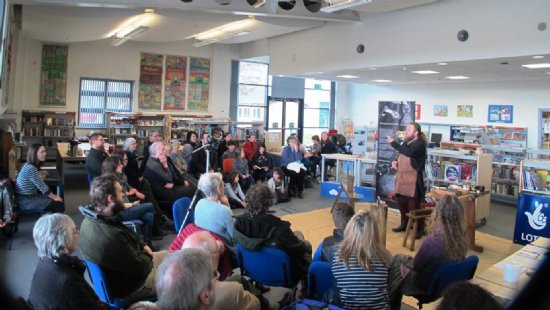 The March Experimental Archaeology workshop focussed on bone and antler making in the Iron Age – here taking the perspective of the ‘long Iron Age’ up to about AD1000 and including the Pictish and Viking periods. Jim Glazzard from Asgard craft – clad in period costume – took us through the raw materials , tools and techniques craftsmen would have used in this period. As he pointed out, decorative styles and some shaping changed during the period, but the forms, techniques and tools were probably the same.
The March Experimental Archaeology workshop focussed on bone and antler making in the Iron Age – here taking the perspective of the ‘long Iron Age’ up to about AD1000 and including the Pictish and Viking periods. Jim Glazzard from Asgard craft – clad in period costume – took us through the raw materials , tools and techniques craftsmen would have used in this period. As he pointed out, decorative styles and some shaping changed during the period, but the forms, techniques and tools were probably the same.
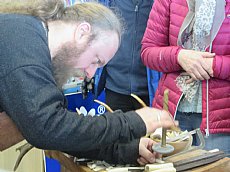 Jim bases his tools on a Viking-Age tool box found on Gotland in Sweden at Mästermyr. This included over 200 tools, many similar to ones found in Roman contexts, including Iron saws, drills, files and hammers. Although we have no native Iron Age tools, he feels that similar tools would have been available to earlier Iron Age smiths. Even using iron tools, it was hard work to make objects – leaving many of us with a profound admiration of craftsmen in earlier periods who had shaped artefacts using stone tools alone.
Jim bases his tools on a Viking-Age tool box found on Gotland in Sweden at Mästermyr. This included over 200 tools, many similar to ones found in Roman contexts, including Iron saws, drills, files and hammers. Although we have no native Iron Age tools, he feels that similar tools would have been available to earlier Iron Age smiths. Even using iron tools, it was hard work to make objects – leaving many of us with a profound admiration of craftsmen in earlier periods who had shaped artefacts using stone tools alone.
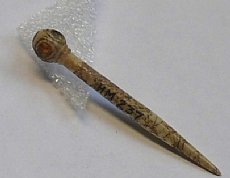 Although there was only time to look in depth at two objects, a range of other artefacts were made from bone and antler at this period, including decorated bone dice, tools, awls, even needle cases. Bone working was especially important in areas where wood was scarcer – such as Orkney and the Western Isles, but Iron Age broch finds on the mainland show it was commonly used there too. We know from early excavations that Iron Age boneworking took place in a cave near Rosemarkie. There parts used for boneworking were found as well as an exquisite small pin with amber insets.
Although there was only time to look in depth at two objects, a range of other artefacts were made from bone and antler at this period, including decorated bone dice, tools, awls, even needle cases. Bone working was especially important in areas where wood was scarcer – such as Orkney and the Western Isles, but Iron Age broch finds on the mainland show it was commonly used there too. We know from early excavations that Iron Age boneworking took place in a cave near Rosemarkie. There parts used for boneworking were found as well as an exquisite small pin with amber insets.
During the workshop Jim made a decorated pin in the morning and a Pictish-style comb in the afternoon. The one overwhelming message we all learned in the workshop is just how labour-intensive bone working was. The first step was to take the seasoned bone and saw a blank which did not have the inner material. Only then was a craftsman able to  start shaping the objects. In the case of the pin, this meant a lot of filing, working to create a slight hip so that the pin wouldn’t slip out easily. He also used various sharp tools to create a design for the pinhead.
start shaping the objects. In the case of the pin, this meant a lot of filing, working to create a slight hip so that the pin wouldn’t slip out easily. He also used various sharp tools to create a design for the pinhead. 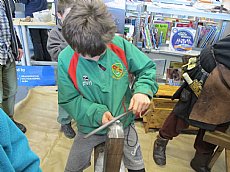 There was also a chance to have a go at the early steps of creating a pin – lots of filing – and opportunities to try out the bow drill to create holes.
There was also a chance to have a go at the early steps of creating a pin – lots of filing – and opportunities to try out the bow drill to create holes.
For the comb, Jim showed us how we would start with antler, cut the necessary pieces and then assemble them. It was impossible to do this in the time available – such a process would take hours - and gives some indication of the workmanship needed and probably the value such objects had. He produced one blank from an offcut of antler (with a lot of careful sawing), and then took four earlier prepared blanks to assemble into a composite comb. Each of the blanks had to be lined up perfectly with holes drilled in the bar, so that rivets could be hammered to hold them together. Only once 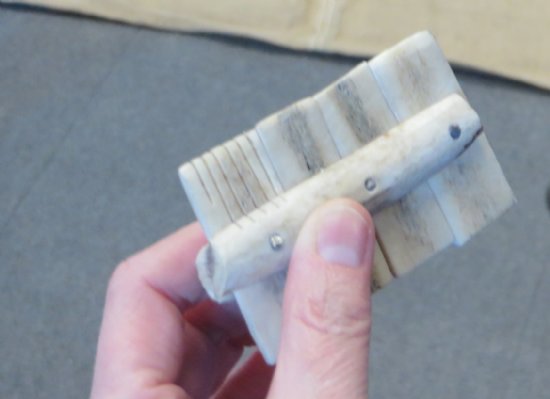 all the plates had been riveted on could the teeth start to be cut. As you can see from the picture, the teeth however were still only squared away. The next step would be to file them so that they were profiled. And only then could the decoration start.
all the plates had been riveted on could the teeth start to be cut. As you can see from the picture, the teeth however were still only squared away. The next step would be to file them so that they were profiled. And only then could the decoration start.
We were all left with great respect for the craftsmen – and questions about who they might have been and their place in society. Surely iron tools would have been expensive and perhaps therefore only for elite craftsmen. Were they itinerant, moving from place to place, or did many communities have them?
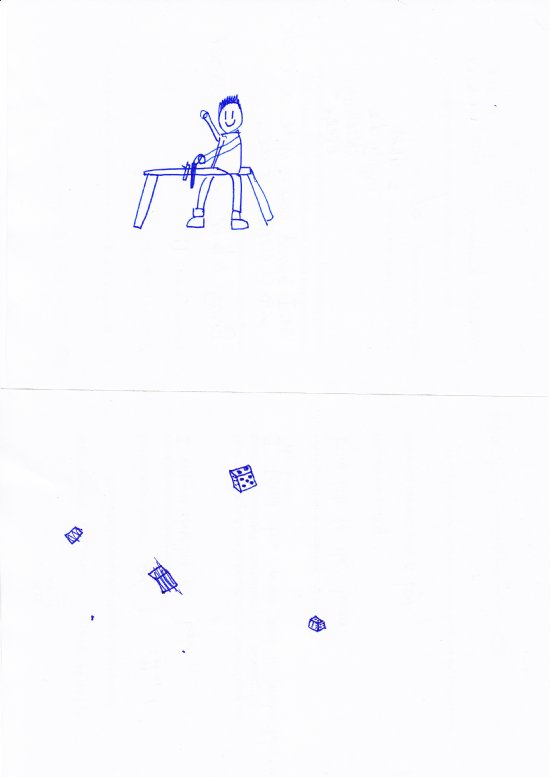 For the loans box, Jim will contribute the simple pin and the composite comb.
For the loans box, Jim will contribute the simple pin and the composite comb.
Resources:
The SCRAN website has a number of illustrations of bone and antler objects from the period, many from the Northern and Western Isles but a few from the Highlands:
Bone beaded necklace from Shetland
Keiss broch, Caithness, bone objects
Pictish Bone comb fragment from Orkney
High backed comb from Orkney
Bone spoon from Orkney
Animal head pin from Orkney
Bone lid from Foshigarry, North Uist
Die and combs from Foshigarry, North Uist
Viking Age animal headed pins from Jarlshof, Shetland
The Experimental Archaeology: Learning about technologies in the past project has been funded by Historic Environment Scotland and the Heritage Lottery Fund.
Add your comment below
- Recent Blog Articles
- Learning Resources
- Crafting Day October 2018
- Medieval Coinage Workshop
- Viking Ring-Money workshop
- Thomas Telford Workshop
- Monthly Blog Archive
- June 2018
- May 2018
- April 2018
- March 2018
- February 2018
- January 2018
- December 2017
- November 2017
